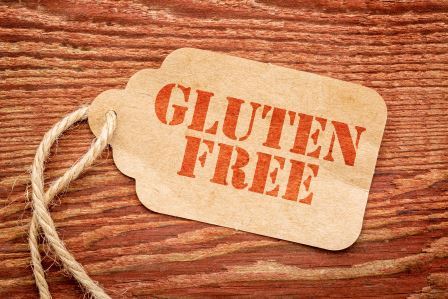by Jen Johnston, CHHC, senior marketing services account manager, for the Step into Natural blog series
An estimated 30% of shoppers are choosing gluten-free options at least some of the time. A gluten-free diet strictly excludes gluten, a mixture of proteins found in wheat and related grains, including barley, rye, and all their species and hybrids (such as spelt, kamut, einkorn, and triticale).
The growth of gluten-free foods is partially fueled by those with celiac disease, a serious autoimmune disorder that affects 1 in 100 people worldwide and non-celiac gluten sensitivity (NCGS) in which the symptoms match celiac disease but the tests are negative. IBS is another reason people avoid gluten, but it may actually be the wheat itself affecting those people because wheat, as a fructan, is a high FODMAP food.
However, Linkage Research found that 52% of consumers who bought gluten-free products are reducing or avoiding gluten because they believe it is simply better for their health, and this is driving the growth more than anything else. Similarly, a US News article reported that 41% percent of U.S. adults believe gluten-free foods are beneficial for everyone.
Linkage Research also found that in seeking information about diet, food, and nutrition, households avoiding gluten are more likely to rely on blogs (from nutrition experts as well as allergy organizations), social media groups, magazines, and books. The “gluten-free is healthier for everyone” belief is propelled by popular books including:
- Wheat Belly by Dr. William Davis
- Grain Brain by David Perlmutter, MD
- The Whole 30 by Dallas Hartwig and Melissa Hartwig
Other important influencers in the gluten-free space include:
- Celiac Disease Foundation: As a non-profit, their goal is to accelerate diagnosis, treatments, and a cure for celiac disease and non-celiac gluten/wheat sensitivity through research, education, and advocacy.
- Gluten Free Watchdog: Started by a registered dietitian, this site tests labeled gluten-free foods and also products that appear to be free of gluten-containing ingredients but are not labeled gluten-free. All product test results are posted, regardless of findings.
- Gluten-free bloggers: Raising Jack with Celiac; Gluten Free on a Shoestring; Gluten Dude; and hundreds more.
- Gluten-free celebrities: Kourtney Kardashian, Zooey Deschanel, Ryan Phillippe, Katy Perry, Lady Gaga, and many more.
The brands that cater to gluten-free shoppers often fall in the natural space, though certainly conventional products can be labeled gluten free. Gluten-free shoppers are often supplement shoppers. A February 2018 study by Linkage Research discovered that consumers who avoid gluten are nearly twice as likely to consume a probiotic or prebiotic supplement, and nearly 1 in 10 has shopped for these at an independent pharmacy. When buying supplements, they are less price sensitive, placing more of a priority on organic, non-GMO, and free-from than the average consumer.
There are a variety of gluten-free certifications that food, beverages, and dietary supplements may include on their packaging. Stocking gluten-free dietary supplements and calling attention to them with signage may be a way to cater to this audience. According to the Celiac Disease Foundation, prescription and over-the-counter drugs are not covered by the FDA’s gluten-free labeling requirement.
However, the FDA has issued draft guidance on Gluten in Drug Products and Associated Labeling Recommendations, which encourages drug manufacturers to label oral drug products that do not contain gluten with this statement, “Contains no ingredient made from a gluten-containing grain (wheat, barley, or rye).” Although the chance of filling a prescription with gluten is extremely small, according to the FDA, it is important to make sure that your patients who are on a strict gluten-free diet avoid all ingestible products that contain more than 20ppm of gluten. The best way to assure this is to confirm with the drug manufacturer. The FDA also recommends the use of DailyMed, with the caution check that the product name and product manufacturer or distributor match the product in question.
In addition, Marilyn G. Geller, Celiac Disease Foundation chief executive officer, offers this advice for pharmacists: “The diagnostic rate for celiac disease is still alarmingly low. Pharmacists are at the frontline of healthcare, and very often, patients will come to a pharmacist first complaining of symptoms and looking for relief. I urge pharmacists to be aware of the 200+ symptoms of celiac disease and NCGS and, if their patients are presenting one or more of the symptoms, to encourage their clients to visit celiac.org and use our Symptoms Checklist, and/or contact their doctor and request a test for celiac disease.”


